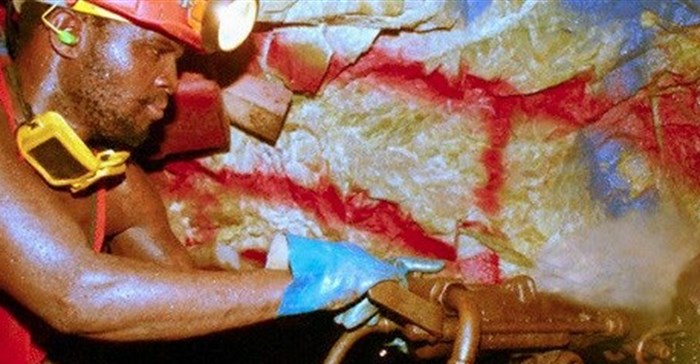“The mining sector employs approximately 470,000 people and our goal remains that of ensuring that each and every one of these employees is able to return home to their loved ones unharmed every day,” Mosebenzi Zwane, minister of mineral resources said on the release of the industry’s safety statistics earlier this year.

According to the department of mineral resources (DMR) data, there has been a downward trend in the number of fatalities and injuries reported – 73 fatalities were recorded last year, compared to 77 in 2015.
And it’s at the country’s gold and platinum mines are where the highest number of accidents and fatalities occur. At least 3,138 workers were injured at work in 2015, this decreased by 13% to 2,743 last year. There is an increase of 5% in the number of annual medial reports submitted by mines, while statutory reporting on HIV and tuberculosis increased by 31%.
“The status in terms of occupational diseases remains a concern. Exposure levels to dust and noise – among others – remain higher than the legislated levels and later manifest themselves as occupational diseases including TB, silicosis and noise-induced hearing loss,” the minister said.
Despite this, the stats show that more companies are achieving 12 fatality-free months and statutory reporting compliance had improved, with mines submitting their occupational hygiene statutory returns and yearly medical reports on schedule.
Fatalities steadily decreased from 112 in 2012 to 93 in 2013, 84 in 2014 and 77 in 2015. There was an improvement of 5%, with 73 deaths recorded in 2016. However, there was some scepticism that even though last year’s fatality figures were down from the previous year, the low percentage improvement showed that more needs to be done.
The 2016 figure excludes the three miners at the Lily mine, in Barberton, following a fall-of-ground (FoG) incident. Their status is still officially missing, as their bodies haven’t been recovered yet.
The number of injuries recorded dropped from 3,138 in 2015 to 2,662 in 2016, which shows that the mining industry managed to reduce the incidents by 15%.
The platinum sector recorded the greatest decrease in injuries, having achieved a 16% reduction in incidents, or 219 fewer incidents, from 2015 to 2016.
However, the sector recorded six more fatalities last year, compared with 2015, when 27 fatalities were recorded. The gold sector also only managed a 3% improvement, reducing the number of deaths in 2016 to 30, having recorded 33 in 2015.
The major causes of fatalities were FoG incidents (33%), while general classification- type accidents (slip and fall, falls from heights and fires) accounted for 21%. Transport factors, including rail-bound equipment, accounted for 14% of fatalities.
Yet, there are companies with pretty impressive zero harm records. Rosond has two underground diamond drilling sites that have a five-year injury-free safety record.
Amandelbult Dishaba Underground Diamond Drilling, near Thabazimbi in the Limpopo province, achieved this milestone at the end of last year, while Evander Underground Diamond Drilling in Mpumalanga celebrated its accident-free record on 12 February.
Underground diamond drilling has many hazards and the possibility for a serious accident is high, says Ricardo Cravo Ribeiro, operations director for Rosond. “Activities require a great deal of manual handling and working conditions are physically demanding.”
“We therefore scrutinise every possible hazard and do whatever is necessary to control and, if possible, eliminate the risks.”
Ribeiro attributes the drilling team’s success to several factors, including focusing on the top hazards and implementing various safety devices for the protection of employees.
The company has also gradually created a culture of safety through quarterly safety drives that remind employees of fundamentals and reinforce non-negotiables.
“Training programmes, including annual and refresher training, play a major role. Training concentrates on the safe operating procedures through theoretical and practical sessions facilitated by qualified trainers and assessors.”
Ribeiro adds that another driving force is objectives and targets. “These are driven by a safety incentive scheme, which rewards the teams with a safety bonus. Our partnership with our clients plays a big role through their safety programmes and standards.”